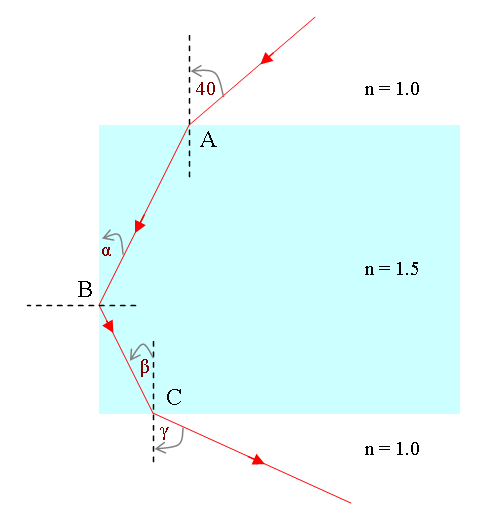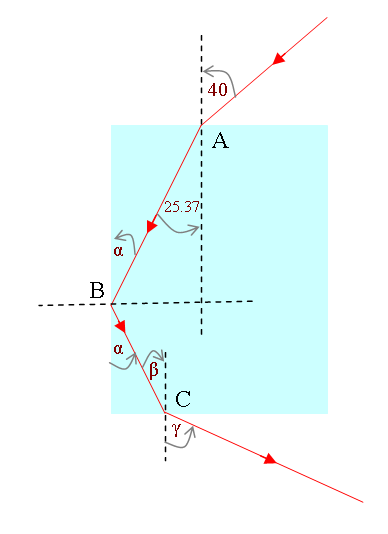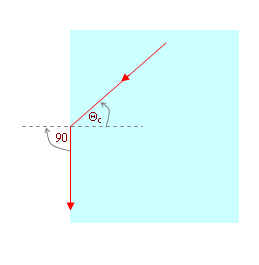a) Find angles Α, Β, and Γ?
b) Will any of the light striking the side of the glass plate at point B pass out through the side?
 We can find refracted angle at point A by Applying Snell’s Law  Θ = 25.37° Using geometry we can see (Normal drawn at point A and left side of the glass surface is parallel to each other. There is a special rule used in geometry (the Transversal Postulate) that involves angles and transversals. It says that if two parallel lines are intersected by a transversal, then the corresponding angles are congruent.) Θ = Α At point B we have refection, therefore incident angle and reflected angles are the same. Using geometry we can also get the relation Α = Β Α = 25.37° Β = 25.37° We can find angle Γ at point C by Applying Snell’s Law  Γ = 40° b) Will any of the light striking the side of the glass plate at point B pass out through the side? To answerer this part, we need to find the critical angle at point B which internal reflection begins. Let’s find critical angle for Glass to Air at point B Using Snell’s Law Critical angle is 41.8° In order for total reflection at point B, incident angle > critical angle Incident angle = 90° - 25.37° Incident angle = 64.63° Critical angle Θc = 41.8° In this example incident angle > critical angle, therefore we have total reflection at point B. Light ray striking at point B will not pass through the side. |